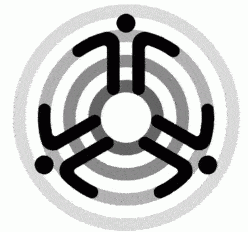“Web Safe” colours (also known as: browser safe colours, web safe palettes, browser safe palettes, “safe colours”, cross-platform colours) are the 216 colours that will be displayed solid (non-dithered) by any graphical web browser on any computer platform which is capable of operating in at least 8-bit colour (256 colours) mode.
Contents
Why are there only 216 colours?
Only 216 out of the 256 colours available in 8-bit mode will be displayed the same on all computer platform/video card/monitor/web browser combinations. The “missing” 40 colours were removed because: some of these are fixed for use by the operating system and since Windows and Mac OS do not use the same colours for their system palettes, both sets of colours had to be removed in order to maintain a consistent, cross-operating system look. The others were removed because they did not display properly across different computer platforms.
Why use 256 colour mode?
In the early days of the commercial Internet,(circa 1995), computers (in particular Windows-based machines) were only capable of displaying a maximum of 256 colours at any given time. One reason for this colour limitation was the high cost of the RAM used on video cards. Early video cards usually came with 128 Kilobytes (KB) of RAM while the high-end cards topped out at 512KB of RAM. This was just enough to display 16 or 256 colours (usually at a resolution of 640 x 480). Compare that “specification” to modern times (2004) where 128 Megabytes (MB) is considered the “minimum standard” for RAM on a video card.
Another limitation was screen resolution. It may have been possible to use 256 colour mode but at a low screen resolution. For example: the video card could operate at a maximum resolution of 800 x 600 but because it used most of the available RAM for the increased resolution, it could only display 16 colours. However, if the user reduced the screen resolution to 640 x 480, the card could display 256 colours.
The difference between 8-bit (256) colour mode and 24-bit (true) colour mode
All colours displayed on a computer monitor are based on the three root colours: red, green, and blue (also know by the acronym RGB). Other colours are produced by combining different “intensities” of these root colours. The “intensity” of each root colour is determined by a scale of 256 values (it begins at 0 and ends at 255). Each root colour has 256 possible values, therefore the maximum number of colours that can be displayed would be (256 x 256 x 256) or 16,777,216; this is known as “true colour,” or “24-bit colour”. Old computers did not have enough video memory to display so many colours, so they only supported 256 out of the 16,777,216 possible colours.
Is 256 colour mode available on modern computer systems?
Yes.
word of caution:
- You do not need to switch to 256 colour mode to view the chart on this page. It will look the same in 8-bit, 16-bit, 24-bit or 32-bit colour mode.
- If you want to switch, make a note of your current colour mode setting before switching to 256 colour mode.
- If you switch your computer from its current colour mode to 256 colour mode, colours may look strange especially if you are using “true colour” icons on your desktop or if you try to view photographic-type images. e.g. JPEG files.
Are web-safe colours manadatory for modern web design?
No. 256 colour displays ceased being a “standard” several years ago. Most modern computers are capable of 24-bit colour mode thus you are free to use whatever colour palettes you wish in the design of your (personal or corporate) website.
The future of web-safe colours
Web-safe colours may not be obsolete just yet. There is a growing market for Internet access via PDAs, cell phones and other portable devices. Most of them now have colour displays but are limited to either 8-bit (most) or 16-bit (on a few high-end devices) colour mode due to memory limitations. There maybe cross-platform, cross-browser inconsistencies just like there used to be in the world of desktop computers so persons who design sites to be viewed on such devices would do well to use the web-safe colour palette.
Web Safe Colour Chart
| #FFFFFF | #FFFFCC | #FFFF99 | #FFFF66 | #FFFF33 | #FFFF00 |
| #FFCCFF | #FFCCCC | #FFCC99 | #FFCC66 | #FFCC33 | #FFCC00 |
| #FF99FF | #FF99CC | #FF9999 | #FF9966 | #FF9933 | #FF9900 |
| #FF66FF | #FF66CC | #FF6699 | #FF6666 | #FF6633 | #FF6600 |
| #FF33FF | #FF33CC | #FF3399 | #FF3366 | #FF3333 | #FF3300 |
| #FF00FF | #FF00CC | #FF0099 | #FF0066 | #FF0033 | #FF0000 |
| #CCFFFF5 | #CCFFCC | #CCFF99 | #CCFF66 | #CCFF33 | #CCFF00 |
| #CCCCFF | #CCCCCC | #CCCC99 | #CCCC66 | #CCCC33 | #CCCC00 |
| #CC99FF | #CC99CC | #CC9999 | #CC9966 | #CC9933 | #CC9900 |
| #CC66FF5 | #CC66CC | #CC6699 | #CC6666 | #CC6633 | #CC6600 |
| #CC33FF | #CC33CC | #CC3399 | #CC3366 | #CC3333 | #CC3300 |
| #CC00FF | #CC00CC | #CC0099 | #CC0066 | #CC0033 | #CC0000 |
| #99FFFF | #99FFCC | #99FF99 | #99FF66 | #99FF33 | #99FF00 |
| #99CCFF | #99CCCC | #99CC99 | #99CC66 | #99CC33 | #99CC00 |
| #9999FF | #9999CC | #999999 | #999966 | #999933 | #999900 |
| #9966FF | #9966CC | #996699 | #996666 | #996633 | #996600 |
| #9933FF | #9933CC | #993399 | #993366 | #993333 | #993300 |
| #9900FF | #9900CC | #990099 | #990066 | #990033 | #990000 |
| #66FFFF | #66FFCC | #66FF99 | #66FF66 | #66FF33 | #66FF00 |
| #66CCFF | #66CCCC | #66CC99 | #66CC66 | #66CC33 | #66CC00 |
| #6699FF | #6699CC | #669999 | #669966 | #669933 | #669900 |
| #6666FF | #6666CC | #666699 | #666666 | #666633 | #666600 |
| #6633FF | #6633CC | #663399 | #663366 | #663333 | #663300 |
| #6600FF | #6600CC | #660099 | #660066 | #660033 | #660000 |
| #33FFFF | #33FFCC | #33FF99 | #33FF66 | #33FF33 | #33FF00 |
| #33CCFF | #33CCCC | #33CC99 | #33CC66 | #33CC33 | #33CC00 |
| #3399FF | #3399CC | #339999 | #339966 | #339933 | #339900 |
| #3366FF | #3366CC | #336699 | #336666 | #336633 | #336600 |
| #3333FF | #3333CC | #333399 | #333366 | #333333 | #333300 |
| #3300FF | #3300CC | #330099 | #330066 | #330033 | #330000 |
| #00FFFF | #00FFCC | #00FF99 | #00FF66 | #00FF33 | #00FF00 |
| #00CCFF | #00CCCC | #00CC99 | #00CC66 | #00CC33 | #00CC00 |
| #0099FF | #0099CC | #009999 | #009966 | #009933 | #009900 |
| #0066FF | #0066CC | #006699 | #006666 | #006633 | #006600 |
| #0033FF | #0033CC | #003399 | #003366 | #003333 | #003300 |
| #0000FF | #0000CC | #000099 | #000066 | #000033 | #000000 |

